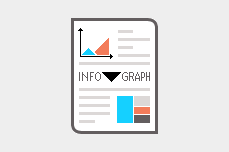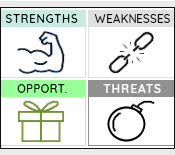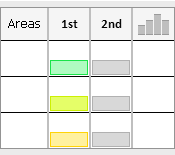
Also known as Situational Analysis and TOWS.
Variants include Porter’s Five Forces Analysis and 5C Analysis.
SWOT analysis is a structured planning tool used to review and assess an organization’s current position and overall health. This analytical framework enables the organization to look deeply into its internal and external factors that impact its ability to achieve its strategic goals. It can be applied not only at the organizational level, but can also be effectively applied to business units, divisions, departments, projects, and even in personal development and career progression. SWOT simply stands for Strengths, Weaknesses, Opportunities, and Threats.
In order to execute a strategy within an organization, it is important to understand the various factors influencing its performance, and this is precisely where SWOT analysis comes in. It has become one of the most popular strategic planning tools, often serving as a preliminary step before the development or revision of a strategic plan. SWOT analysis facilitates the assessment between where an organization stands now within its industry and market, and where it aims to be in the future.
SWOT analysis helps in the identification of key internal and external factors that are helping or hindering reaching business objectives. Internal factors are the strengths and weaknesses within the organization, whereas external factors are the opportunities and threats presented by the external environment. The outcomes of a SWOT analysis exercise are commonly presented in a four-field matrix format.
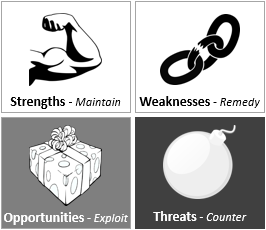
Beyond its core role in strategic planning, SWOT analysis has many other applications. It can be useful, for example, in evaluating strategic alternatives such as investment opportunities, potential joint ventures, partnerships, or acquisitions. Furthermore, it can also be useful in project management during the prioritization process of projects to identify those projects with the highest likelihood of success, ultimately increases the chances of choosing projects that offer the most significant advantages.
Conducting a SWOT Analysis
SWOT analysis is normally led by a facilitator who should have an experience in the company’s strategy. The following steps outline how a SWOT analysis is conducted:
- Invite representatives from finance, operation, marketing, and any other key players.
- Clearly explain the purpose for conducting the SWOT analysis and how you will do it.
- Hang out four large flipcharts, one for each of the four SWOT categories.
- Brainstorm the strengths and weaknesses within your business, and the opportunities and threats present in your environment.
- Record inputs and ideas from the brainstorming session on the flipcharts.
- Clarify content and ensure the appropriateness and completeness of the recorded information.
- Share and communicate the outcomes to relevant stakeholders.
- Take actions and assign responsibilities to maximize strengths and opportunities and minimize weaknesses and threats.

Example
The following example uses a four-field matrix to present the findings of a SWOT analysis conducted for an organization. It is important to note that weaknesses and potential threats are common in any business. Consequently, efforts should be made to transform weaknesses into strengths and threats into opportunities.
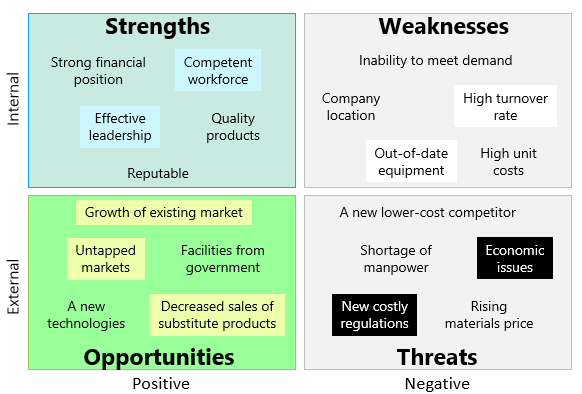
Personal SWOT Analysis
Although SWOT analysis was originally made for businesses, it can be used with equal success to identify and understand a person’s strengths, weaknesses, opportunities and threats. This analytical exercise can help you to better understand many things about yourself and your external environment. Subsequently, you can apply personal development strategies to convert weaknesses into strength, capitalize on strengths and opportunities, and mitigate or eliminate weaknesses and threats.
Example
The following is an illustrative example that uses SWOT analysis to identify and assess a person’s strengths, weaknesses, opportunities and threats.
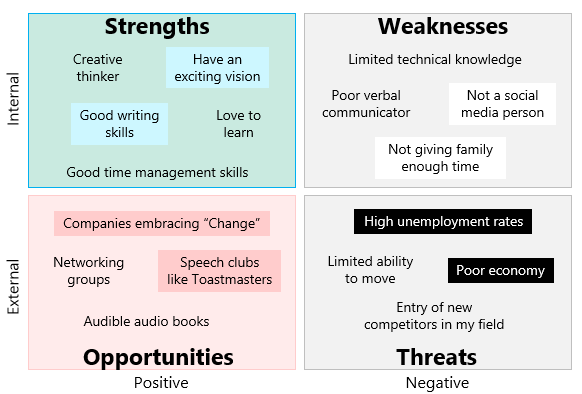

There are many tools that can help record the results of a SWOT analysis workshop. One of the simplest and most straightforward ways is to use this SWOT analysis template.
Wrapping Up
In summary, SWOT analysis is a flexible tool applicable not only in organizations but also in personal development. It helps align current situations with future goals and provides a comprehensive view by examining internal strengths and weaknesses and external opportunities and threats. Its uses range from strategic planning to project management, making it valuable for informed decision-making in both business and personal contexts.
Other Formats
Do you want to use the slides in your training courses?

SWOT Analysis Training Material – $14.85
Related Articles
Related Templates






